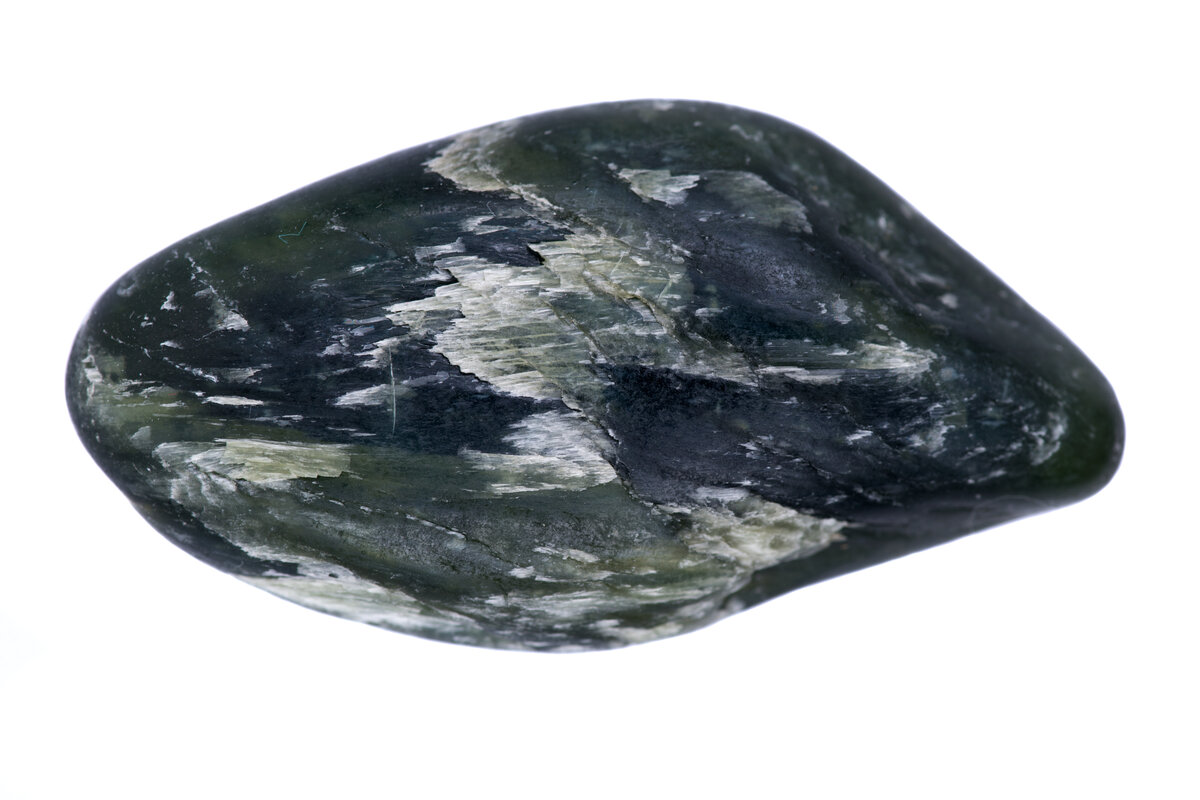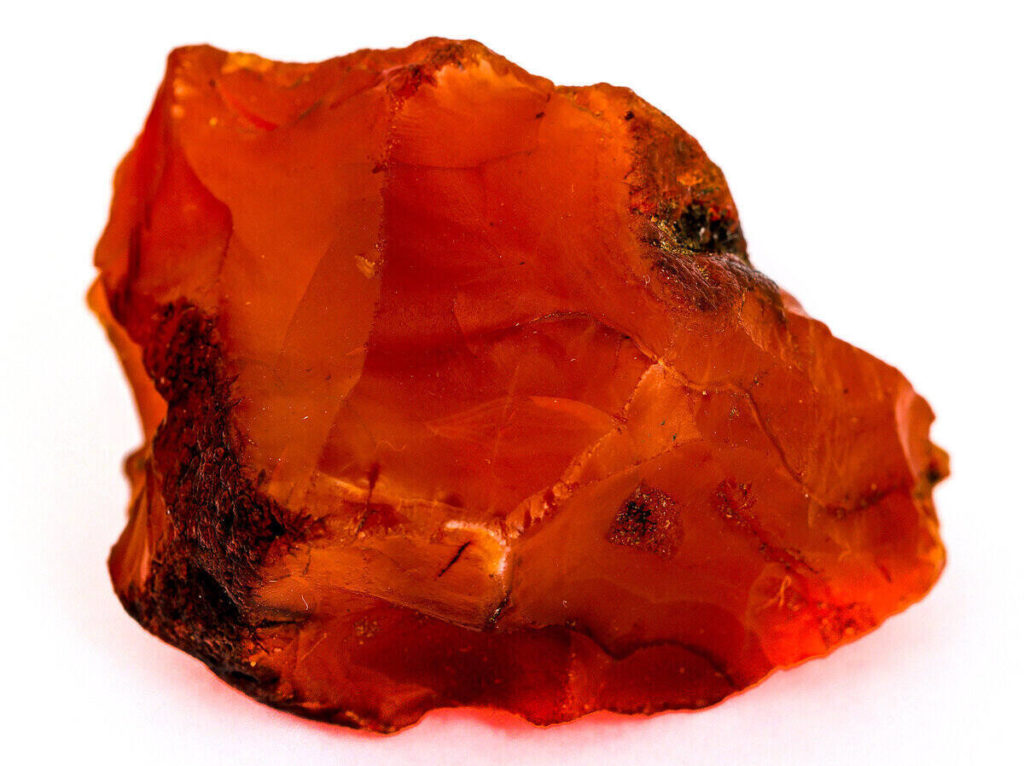If you’re looking to do some rockhounding in Rhode Island, you should first temper your expectations. Unfortunately, Rhode Island is amongst the worst states in the country for rockhounding due to the lack of notable locations and the relatively small variety of interesting material that can be found
But don’t lose hope! There are still a few rockhounding sites where a collector can go spend some time with the hope of finding something to add to their collection. Many of the beaches and stream gravels in Rhode Island are known to contain colorful varieties of quartz-family minerals, and if you can gain access to quarries in the area (most easily accomplished as part of a rockhounding club) you may be able to find less common rocks and minerals.
The best places to rockhound in Rhode Island are the beach gravels of Narragansett Bay and Mt. Hope Bay, particularly at Bonnet Shore Beach, Pawtuxet, and Warwick. Many popular rockhounding sites like Diamond Hill and Iron Hill Mine are now closed.
| State Symbols | |
|---|---|
| State Mineral | Bowenite serpentine |
| State Rock | Cumberlandite |
| State Gemstone | — |
| State Fossil | — |

I’ll dive deeper into the types of material you can find here and exactly where you can being your search, along with a handy map and some additional resources to help you along the way.
Rocks and Minerals Found in Rhode Island
As far as its variety of collectible rocks and minerals goes, Rhode Island, unfortunately, ranks among the worst states in the country. This tiny state simply lacks the necessary geologic makeup and diversity required to produce interesting gemstones in any notable quantities.
Still, there are some worthwhile rocks and minerals you can hope to find as a collector. Most of the best finds will be in the quart family, especially in the reworked material of beach gravels. Small specimens colorful agates, jasper, and carnelian are relatively common on many Rhode Island beaches.
The only other notable rocks in Rhode Island as far as rockhounds are concerned are bowenite and cumberlandite. Bowenite, the state mineral, is of particular interest as a high-quality serpentine used in lapidary work.
The most commonly found and collected rocks and minerals in Rhode Island are:
- Agate
- Jasper
- Carnelian
- Quartz Crystals
- Serpentine
- Chalcedony
- Garnet
- Pyrite

If you’ve already found a rock and you’re not sure what it is, I would highly recommend checking out my Practical Rock Identification System. This bundle of information includes a book, videos, and online tools. It is, simply put, the most comprehensive and easy-to-understand rock identification system you’ll find anywhere.
You can also read through my free rock identification guide and mineral identification guide which are filled with useful information and tools.
Where to Rockhound in Rhode Island
Important Disclaimer: I have not been to these locations myself, and I do not know if they are currently open for collecting. Use this resource as a guide to get you started. Follow posted signage and always get permission from the landowner to collect.
Through quite a bit of research and cross-referencing of available literature, I have compiled this list of some prospective locations in Rhode Island which I would recommend to people looking to do some rockhounding. These are mostly comprised of beaches, old mining prospects, washes, streams, and historically known rock and mineral collecting sites. For additional reading, I’d highly recommend these books you can find on Amazon:
Please remember that rock collecting locations are constantly changing. Specimens may become depleted from other collectors, the location may have been built on or altered, locality information in literature may be inaccurate, and property ownership may have changed hands. Please note that I have not been to these locations. I have found records of these rockhounding sites over a variety of sources and offer these locations as a place to start searching. I cannot personally attest to the accuracy of the given locations or the quality of the material there.
Joining up with a local rockhounding club for a group trip can often get you access to otherwise off-limits locations like privately owned mines and quarries. There are several rockhounding clubs in Rhode Island so you can most likely find one you like nearby.
I have tried to take care not to list locations within National Park boundaries since collecting is illegal there, but please remember that it is up to you to make sure you have permission to collect wherever you are. Even if you are on land that is generally open for public use there may be privately owned mining claims inside those boundaries and you’ll need to get permission to collect on that location.
Though there are many locations listed here, this list is far from exhaustive. A location’s listing here is not a guarantee of accuracy. Be safe, never go underground, and make sure to get permission from the landowner to search for and collect specimens.
If you’re planning on heading to the field, make sure you have all the gear you’ll need! To get started, you can check out my recommended gear page which contains my full reviews for every Geologist’s favorite rock hammer and the best hiking backpack I’ve ever owned.
Many of the best rockhounding sites in Rhode Island are privately owned. Many are commercially operated mines and quarries, and gaining permission to collect on any of these properties is, as always, absolutely essential. Some are open to the public for collecting at select times of the week, often on weekends.
Rhode Island Rockhounding Sites
Most of the best places to rockhound in Rhode Island are along the shores of Narragansett Bay and Mt. Hope Bay. There are a few other locations worth checking out, but for the most part Rhode Island is relatively lacking in good the types of gemstones that typically interest collectors.
The material found on the beach shores is typically in the form of pebbles, but sometimes can be up to 2 inches in diameter. Almost everything you can find will be in the quartz family, including agates, jasper, and carnelian.
Tip: Check out my Complete Rockhounding Guide for tips on planning your rockhounding trip and getting the most out of your time in the field!
Rockhounding destinations like Diamond Hill and Iron Hill Mine used to be extremely popular with collectors but are now closed, mostly for liability concerns. I have listed some area quarries below but, as usual, you will have your best luck gaining access as part of a rockhounding club.
The area surrounding Sneech Pond reportedly has several old prospects and small mines where you can sort through the tailings to find some specimens of minerals like garnet, magnetite, and rhodonite. I would also recommend searching the gravels of the Moosup River for a variety of minerals including epidote, pyrite, garnet, and labradorite.
Rhode Island Rockhounding Laws & Regulations
One of the most common questions rockhounds have is whether or not they are allowed to collect at a certain location. It is the responsibility of each rockhound to obtain permission from a landowner to search and/or collect on a piece of property.
The ownership and status of land can and does change frequently, making it impossible to document accurate information for every location on this page. However, I have compiled a list of resources here so that you may investigate and obtain permission for any locations (found here or elsewhere) for yourself.
Public Land Resources
I have written entire articles which cover the rockhounding laws and regulations for nearly every type of public land you can think of. I encourage you to check them out if you are curious about the legalities of rock and mineral collecting.
- Rockhounding on Public Land: Laws and Regulations
- Can You Collect Rocks in State Parks? All 50 States Answered
To determine what type of public land a particular location is on, I would recommend starting with these maps of recreational areas from the Rhode Island Department of Environmental Management.
Here are some additional resources to help you check on land ownership and mineral claims:
- US Forest Service Interactive Map
- BLM’s Mineral Land and Records System – to check for mineral claims
Private Land Resources
As with most states, each county in Rhode Island will have records of who owns each piece of property. You can also usually get the landowner’s name and address by visiting the county records office. I would probably start by contacting the courthouse in the county you’re interested in and getting whatever contact information you can for the landowner.
Sources & Further Reading
The locations and information contained in this article are primarily derived from academic papers, online resources, and other outside sources. If you would like to read some of the source material for yourself I have listed them below. The majority of these locations are my interpretation of Robert Beste’s A Location Guide for Rock Hounds in the United States. Other sources include:
- mindat.com
- Mineral Resources Data System
- Rhode Island Department of Environmental Management
- Rhode Island Geological Survey
- Rhode Island Mineral Hunters Facebook Group
- American Mineralogist, Notes on the Mineral Localities of Rhode Island, Fisher & Doll
This post is part of my State-By-State Rockhounding Guides series. Please check out more states for thousands of additional sites to go rockhounding!
